Reproduction of ficus by cuttings at home
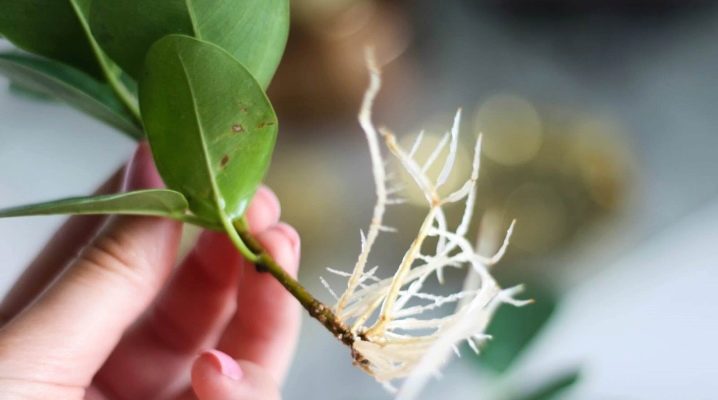
Ficus is a very beautiful ornamental plant, which is often called a "tree in a tub". Usually it is grown in office buildings, kindergartens, schools and hospitals, however, and in a spacious apartment, ficus will undoubtedly become a highlight of any interior. In this article, we will tell you about the features of propagation of this original plant by cuttings and give practical recommendations for caring for a young flower.
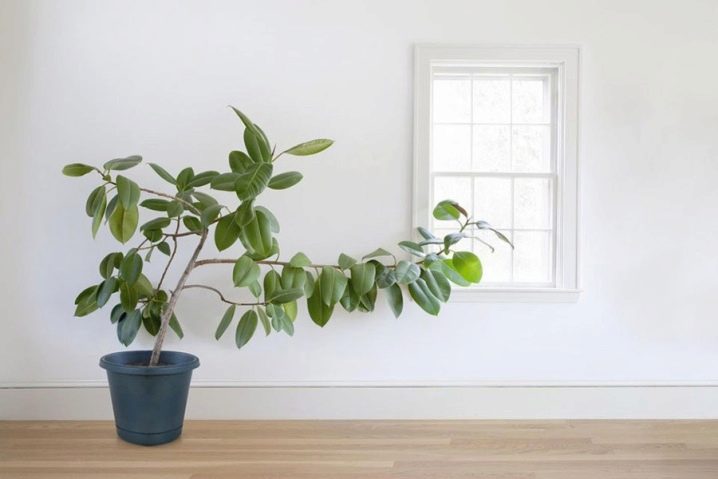
Preparation
Before you grow a new green pet, you must first take care of creating conditions suitable for its habitation - choosing the right potting mix and a high-quality pot. In any gardening store, you can purchase a substrate for ficuses, but if you wish, you can make it yourself. For this:
- mix vermiculite, peat and perlite in a 1: 1: 1 ratio;
- mix well;
- add a third of clean river sand and mix again.
Additionally, you need to take care of drainage; expanded clay or pebbles are used in this capacity. Ficuses prefer loose, water and air permeable soil, rich in nitrogen.
The plant does not tolerate heavy and oily soil, reproduction in such a substrate will not allow a strong and strong flower to grow.

No less importance should be given to the selection of capacity. The pot should be fairly spacious: the ficus grows very quickly, so the root system literally increases in size in a year. If the volume of the container is insufficient, then the roots begin to rest against the walls of the pot, which prevents the full supply of the green parts of the plant with nutrients.
The pot must be deep: short, but wide container is not suitable. It is very important that the container has drain holes medium size. If they are too large, this will lead to a lack of moisture in the soil, and too small will cause waterlogging of the soil. It is best to give preference to clay containers: air penetrates into the ground through the pores, in addition, the material is heavy, so the pot can withstand a fast-growing tree.
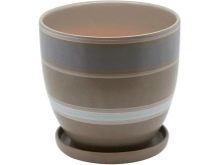


How to propagate ficus by cuttings?
Ficuses are propagated only vegetatively. Let's dwell on the most popular technique - grafting. It is necessary to cut ficus in the spring and continue until mid-July, that is, in the stage of the most active growth. For reproduction, cuttings are cut in size 10-15 cm, it will not work to grow a full-fledged plant from a very small cutting.
The shoots must be cut off with a sharp knife or pruner, and the cut must be oblique. It does not matter where the cutting was taken from - it can be either the top with leaves or a stem fragment taken on the trunk. The most important thing is that the plant itself is young enough otherwise, the stalk will simply not let the roots go. At the same time, you should not use too young plants - the stems should already be lignified.
At the cut site, a viscous milky juice is usually released, it is necessary to get rid of it, since this sticky substance clogs the cut with a rather dense cork and thereby blocks the pathways of the flower. As a result, the ficus can no longer develop and dies.
To avoid this, it is necessary to rinse the cuttings or soak in a bowl of warm water until all sticky residues are completely removed.Then the blanks are dried in the fresh air for a couple of hours and only after that they start rooting.
The easiest option is to place the cuttings in soft water. To do this, remove all the leaves below, make several cuts along the base and place the cutting in a vessel with water. The substrate should be at room temperature, it is advisable to dilute a little methylene blue in it or place a tablet of activated carbon in it - these measures will save the future plant from decay in water. If you wish, you can add a little "Kornevina" Is an effective root stimulator that promotes the rapid development of a healthy root system. The water needs to be changed every week.
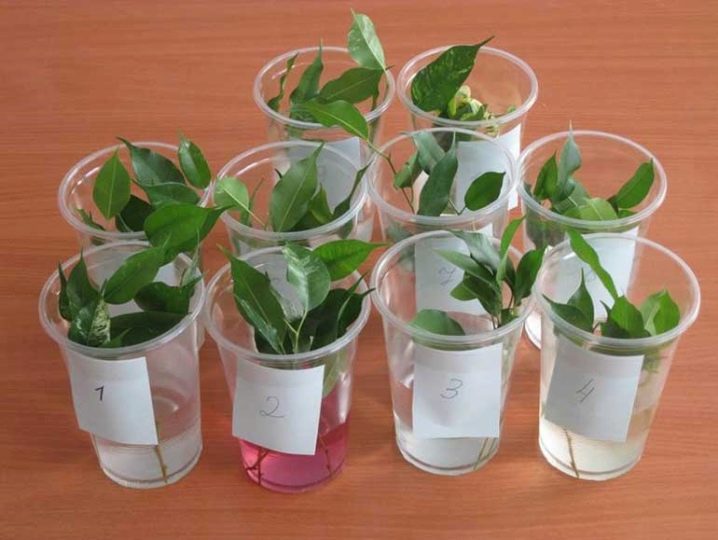
Ficuses of all varieties are best rooted at a humidity level of 70-80% and a temperature background of 25-30 degrees. To create such conditions, you can build a small greenhouse, for this purpose, a piece of an ordinary plastic bottle or a plastic cup is put on a container with a sprout, the walls are darkened. After 3-4 weeks, you can notice small white growths - it is from them that roots begin to grow after a few days. When the roots reach a length of 2-3 cm, the ficus must be transplanted into the ground, where the shoots will continue to reproduce in a permanent place.
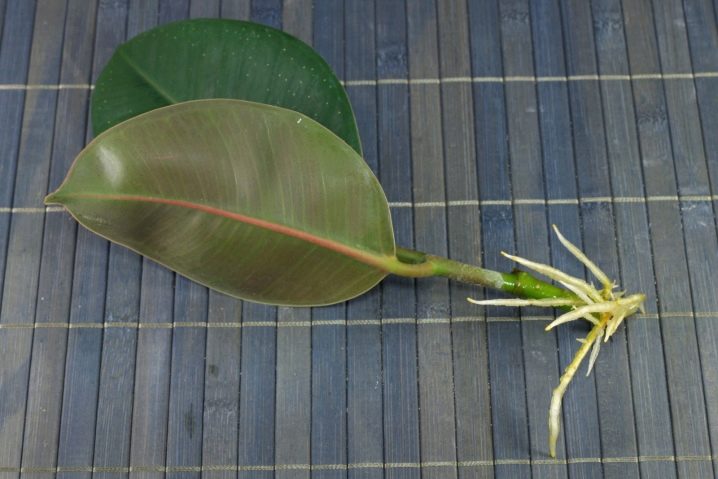
Please be aware that do not overexpose the flower in water, it is fraught with decay of young, fragile roots. Some growers prefer to plant ficus directly in the soil mixture and root it already. The sequence of actions here is about the same - the stems of an adult ficus are cut into cuttings, washed from the juice and dried in the open air.
A small depression is made in the prepared soil, after which you can plant the cutting by about 1 knot. The earth is moistened with a pale pink solution potassium permanganate, this helps to protect the plant from possible fungal diseases. Then they equip a mini-greenhouse, for this they simply place a plastic bag on top and put the pot in a warm, sunny place.
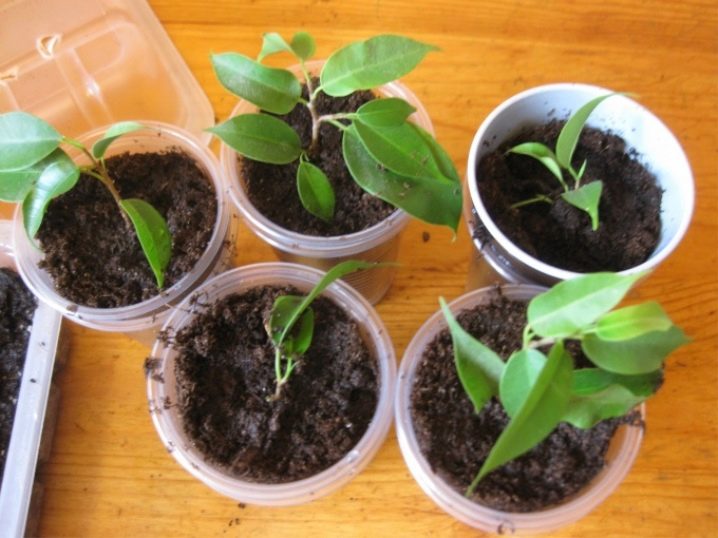
After 3 weeks, young shoots appear, they indicate that the rooting was correct. In this case, the greenhouse is cleaned, but this should be done gradually. To begin with, they pierce several holes so that the plant gradually gets used to the new environmental conditions and only after that the bag is removed.
Of the most modern methods of grafting, the use of peat tablets can be distinguished. They contain special stimulants of growth and root formation, which allows you to achieve almost 100% effect.
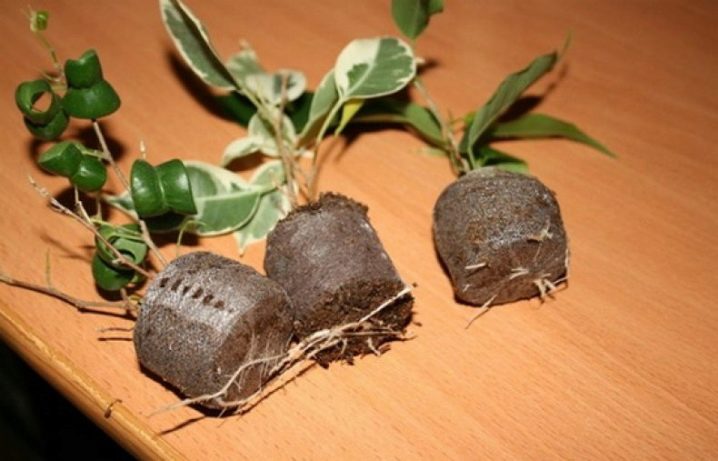
Preparation for rooting is no different from the above techniques, but they themselves the tablets are thoroughly soaked before planting the cutting, and when they swell, they are thoroughly squeezed out and used for the basis for the propagation of shoots.
Follow-up care
Immediately after landing young ficus does not need feeding, since during this period the plant is undergoing quite strong stress and is forced to spend all its energy on adapting to new habitat conditions. Top dressing can be applied no earlier than a month after transplanting a young sprout into a pot. Do not worry that the plant will lack nutrients - those that it will receive from the substrate are quite enough. It is advisable to use ready-made vitamin and mineral complexes for evergreens with a high content of phosphorus, potassium and nitrogen.
A young tree loves lighted places, but dies from direct rays, so the light must be diffused - it is best to place the flower on the west or east side. If the pot is located on the south window, you should darken the glass with foil or place the pot behind a thin tulle. When planted on the north side, the plant will require additional lighting, especially in the autumn-winter period.
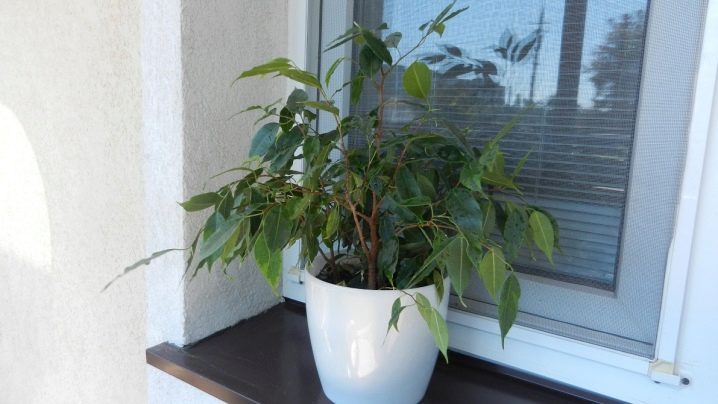
The plant needs a stable room temperature of 20-23 degrees, if the air is colder or, conversely, hot, the ficuses will begin to shed their leaves. Remember to water the flower regularly as the substrate dries, spray the leaves with a spray bottle and give your green pet a warm shower from time to time.
Advice
Regardless of the variety of ficus, there is a few basic rules for its reproduction:
- the procedure must be carried out in the summer or spring;
- young, freshly rooted shoots should not be placed in direct sunlight, since they are rather poorly tolerated by ultraviolet radiation;
- carry out all work only with gloves, since the milky sap of the flower is quite poisonous.
Possible mistakes
In conclusion, let us dwell on the list of the most common mistakes when propagating ficus by cuttings.
- The cuttings have rotted in the water. Most often, the reason is that you have "soaked" the stem - damaged tissues very quickly succumb to various diseases.
To prevent this from happening, either a sharpened knife or a scalpel is used for work.

- Cuttings rotted in the ground... This usually happens with excessive watering. For full-fledged root formation, the plant needs not only water, but also air. In the swampy substrate, it is practically absent, therefore, the conditions necessary for the successful reproduction of the ficus are not maintained.
- The stalk does not give roots for a long time. You need to cut off the stalk just under the bud. The fact is that plants have their own "instinct of self-preservation" - the ficus tries to protect its bud and therefore throws all its strength into growing roots near it. If you leave a small section of the stem under it, then a supply of useful trace elements will remain in it, which will be enough to maintain the kidney for a long time. In this case, the appearance of the roots has to wait a very long time.
It should be noted that regardless of whether you are rooting cuttings in water or in soil, rot can be caused by low temperatures. The optimal condition for the growth of full-fledged roots is considered to be a temperature of at least 22 degrees, therefore, if you carry out work in the winter season, place a sheet of foam plastic under the container with the shoots. It will protect a young plant from a too cold windowsill.
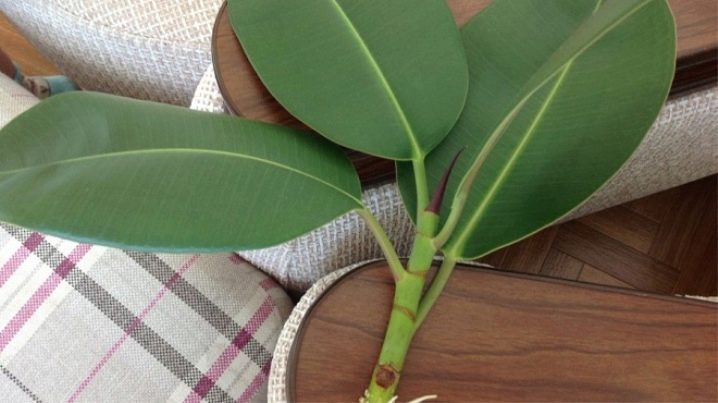
- The cuttings are dry. The reason is obvious - the leaves were not removed from the cuttings. It is not worth pitying them at all: when the shoots take root, new leaves will not be long in coming. Before placing the cutting in the substrate, you should carefully cut off all small leaves, and cut off large ones by 2/3.
Too large leaf plates intensively evaporate moisture, which leads to the desiccation of the sprout.
With the creation rooting stimulants reproduction by cuttings at home has become much easier, however, there are also some subtleties here. "Kornevin" and other drugs of similar action should be used strictly according to the instructions: overdose, even the most insignificant, leads exactly to the opposite effect. There are cases when the ficus already gave roots, the delighted florist added another dose of the composition to the container, expecting that the cultivation of the new ficus would go faster, but instead the plants died.
The following video will tell you more about the reproduction of ficus at home.































The comment was sent successfully.